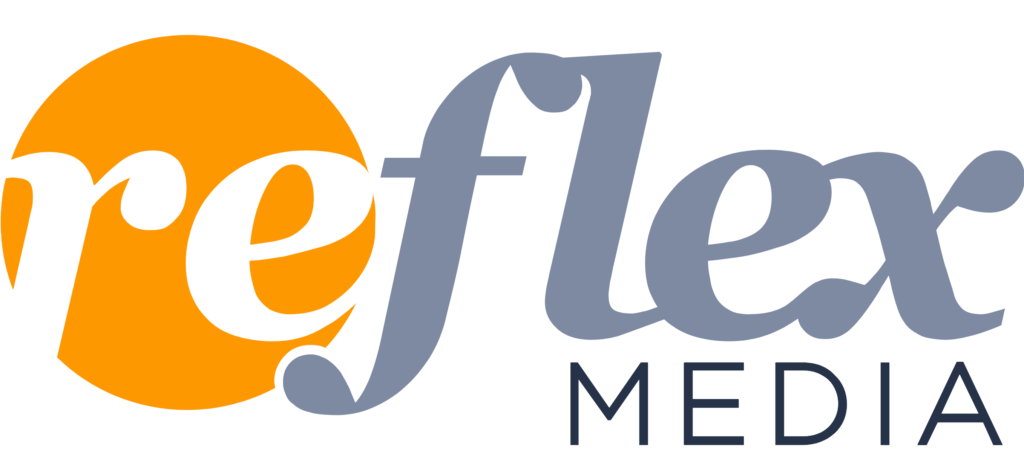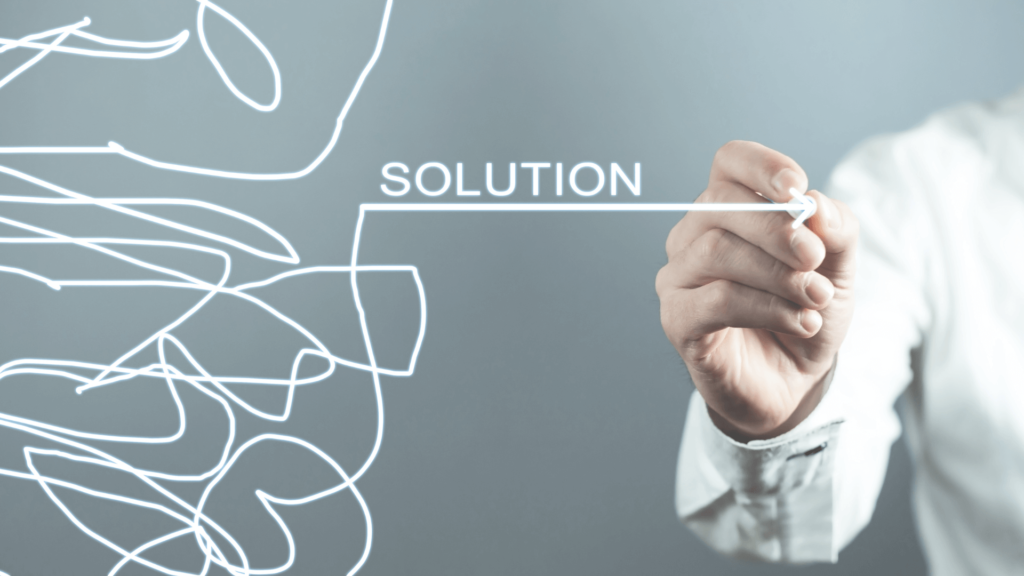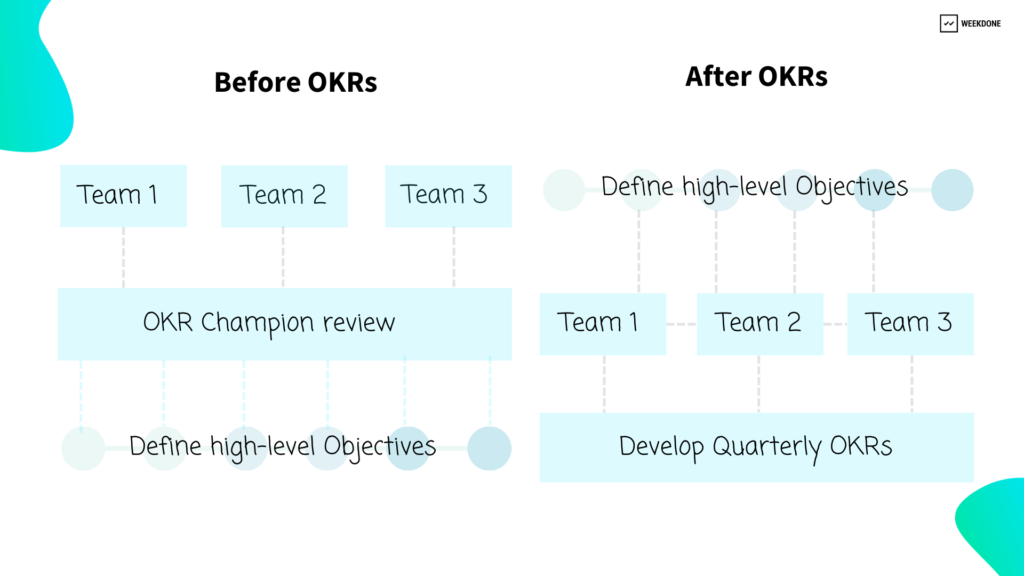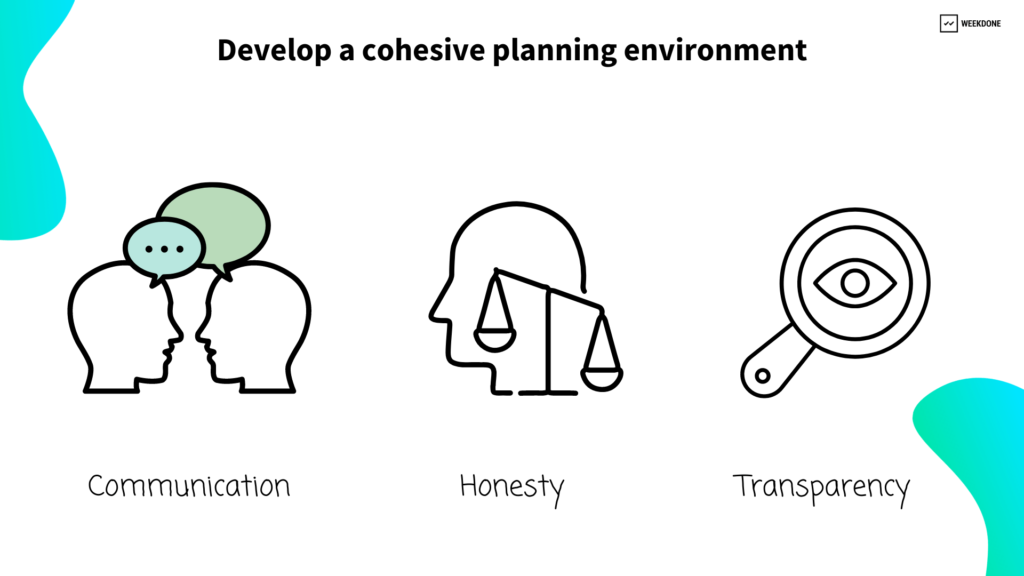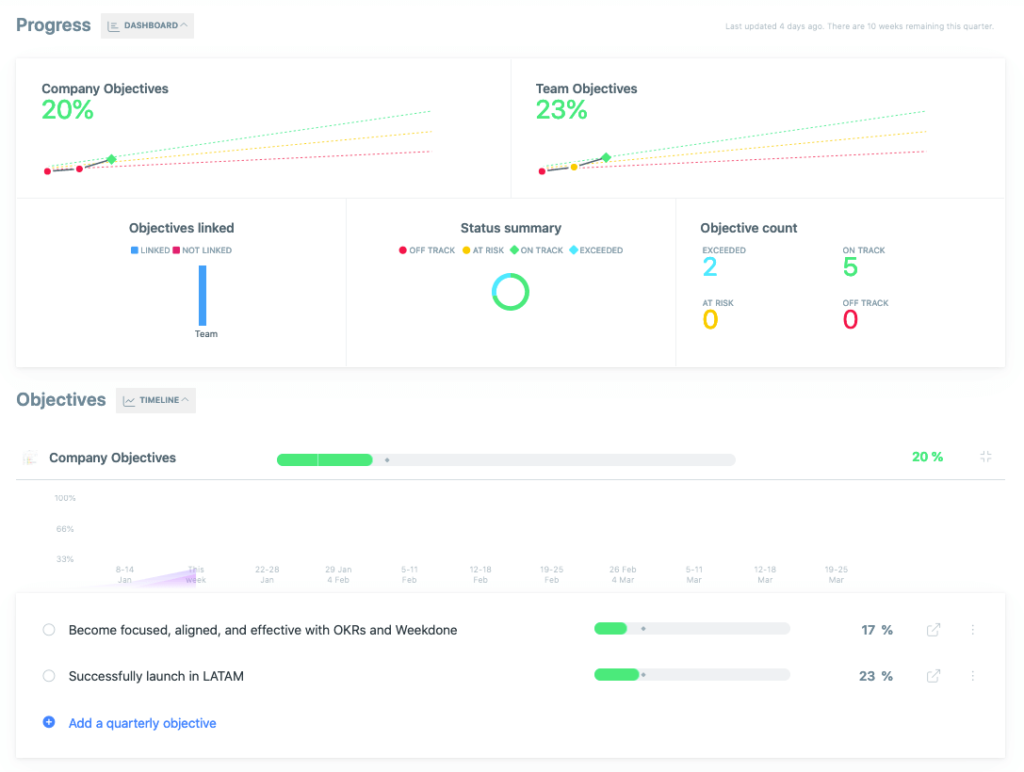When you think of a top-notch management example, what do you imagine?
In our experience, great leadership ticks these three boxes:
- there is a sustainable and straight-forward goal-setting process that everyone understands;
- team managers and employees are proactive and not afraid of trying new things;
- employees are trusted to do the job they were hired to do.
For many professionals this may sound too good to be true and yet, whenever we interview a leader of a successful company, we hear all of the same buzz words: alignment, clarity, trust, and courage.
We believe that implementing OKRs is a step towards better leadership.
As a goal management tool for companies, Weekdone is often a part of a change management process in an organization. And, as our subscriptions have OKR coaching included, our team has a unique advantage of seeing a company’s journey from zero to hero or, more accurately, from initiatives overload to crystal clear priorities.
In this interview with Ulysses Diaz, the Director of Program Management in Reflex Media, we discuss three main areas and all kinds of things in-between:
- How OKRs help to lead a company through a hard time;
- How different teams handle goal management internally; and
- What managing an OKR process really means.
This interview will be especially helpful for CEOs, COOs and team managers looking for answers to the oldest question of leadership history: how to get things done on time and under budget.
Read more about Ulysses Diaz and his remarkable professional career at the end of this article
How to Successfully Implement OKRs
In an organization of 170+ people, how did you get everyone to use OKRs successfully?
The success of the OKR rollout depends on 2 things: the time you put into it and the effort from the OKR champion. I think the executive buy-in and the effort from whoever is championing the process in the company are probably equally if not more important than the time spent implementing the process.
Essentially, you can put two years into it but if the person who is rolling out the new goal-setting approach is not truly “championing the process”, the teams are going to lose faith in it. Championing the process means talking to the teams, checking in on them, providing support, and also optimizing the process consistently.
You have to match the level of enthusiasm and dedication that you are expecting the teams to put up. Otherwise, they are going to give up on it. Or they’ll do what you tell them to do quietly, but it will all be sandbagging. And they won’t take it seriously.
But also, you do have to go through the cycles and show that the process works in order for the people to rely on consistency and trust the process.
Do OKRs Always Work?
Do you think there are companies where OKRs would never work?
Yes. In an organization (or a field of work) where employees cannot think outside-of-the-box and embrace the abstract.
In OKRs, there are a lot of abstracts and uncertainties. And you need to take chances and propose ideas that may or may not work. Sometimes, you will try something that is very hard to measure but you have to try it and learn in the process. There are ways to quantify things (that’s where KRs come in) but still – it gets difficult.
I would say that maybe conservative companies with the old school way of thinking – like assembly line type of work – wouldn’t have much success with OKRs.
But even then, there are ways to improve the management style without going for hard core changes.
Preparing for OKR Rollout
How did you prepare for the OKR rollout?
To give you some context, we have been using OKRs for more than two years now. Before that, company-wide goal setting was non-existent. There was some planning done in silos but with no cohesive structure to it.
Although it was good to talk about priorities on the team level, things always broke down when people had to collaborate with other teams in the company.
Because of those silos, there was a very competitive nature in the organization and I found it counterproductive. The teams were fighting for resources and playing the game of “my priorities are more important than your priorities” and there was just no agreement.
So even before we decided to implement OKRs, I knew that we had to change the way we communicate.
Six months prior to implementing OKRs, we introduced a process that started some cultural changes in the organization.
The new process was really about facilitating communication and being transparent on the areas of interest from the executive level. This was one thing that we had to be very intentional about from the beginning. It doesn’t happen on its own.
First there were a lot of complaints and grumbling about the intensity of the conversations, the amount of them, and not understanding how it was all going to tie together in the end. So there were a lot of trust issues as we were rolling things out.
The employees had to trust in my ability to bring this all together in the end. When you have so many people talking about so many different goals, it’s very easy to confuse or forget things.
I did warn everyone that conversations and meetings were going to ramp up but I also explained why. These conversations were meant to lead to better alignment, transparency, and collaboration during the quarter.
Once we brought OKRs into it, it really gave us a system and a framework to make the process sustainable. OKRs gave us a focal point to align the teams and figure out dependencies.
Before OKRs, we would develop strategies individually across the teams and then I would go through all ideas and find the commonalities and say how many high level programs we have for the quarter.
Now with OKRs, we do it the other way around – we define those high level programs and points of interest at the beginning and then we invite the teams to figure out their OKRs to drive the company forward. *
*more on this process in part 2 of this interview with Ulysses
Did you evaluate any other methods besides OKRs?
We worked with different methods and processes but they were not goal-setting per se. Not in the way we do it now. So, we had sprints and sprint check-ins, we followed SCRUM to some extent, we had revenue KPIs…
Before OKRs, the whole process was something like: “we need to increase revenue by this much this quarter”, and then there would be some conversations between the C-suite and people responsible for driving revenue.
We didn’t have a clear framework for these conversations before I started instituting OKRs.
Company Response to OKR Methodology
What was the first response to OKRs from the teams?
It was confusing for people… One of the most confusing things was this idea of “shooting for the moon, and landing amongst the stars”. Which was about consciously setting goals that were aggressive and knowing that you will probably not achieve them entirely.
The second confusing idea was “less being more”. This was about not creating a long list of to-do items and “nice-to-haves” that you know you are not going to achieve. And just really saving that energy and rerouting it towards the three or four things that you are going to be able to get done.
One other challenge was around quantifying progress, and quantifying how you could get to a point where there was enough work done (although it wasn’t complete) and you could still move from one quarter to another and feel progress.
One of the biggest things that I’ve learned in running an organization is the necessity to feel progress and to be able to see it.
If the teams feel like they are working really hard but there is no visible progress, they are going to get discouraged and lose faith in the leadership. And if they are not going to be enthusiastic – it just completely changes their mindset.
Before we rolled out the OKRs, we’ve always been a very high-paced company with high standards for all employees. So for anyone to feel like they are not achieving 100%, not achieving something that is (in their head) a finished product, would be considered underperforming in our previous work culture.
This is why we had a few quarters when teams had way too many KRs or way too many OKRs so I had to work with them and condense their thinking. And it sounds easy but we did have a few challenging quarters when first rolling out OKRs properly.
What was particularly challenging?
Well, there were some instances when people were physically yelling in some planning sessions, low morale, definitely had some turnover… But the employees who left at this time were the ones who were probably going to leave at some point or another anyway – whether through them getting fired or quitting.
I think the impact that I saw the most was in the attitude of the teams. Kind of like their emotions, their morale, the willingness of the group to charge forward to the next quarter when they haven’t been able to decompress from the quarter that we are currently in.
As you are planning long term, that really starts to hinder the progress across the board because everybody is just less enthusiastic.
How did you overcome those challenges?
Through persistent transparency and communication. Whenever a problem came up, I made sure to grab the individuals that were involved and facilitated the discussion between them. I would frame the problem, get insight into how each of them were feeling and then get us all in the room and talk through it.
And so now, the planning process that we have is designed in a way to get those conversations done at the beginning before we actually move into the planning. It’s all part of the process – to talk about any feelings of burnout, or frustrations – before we even get to the goal planning.
Stage 1 is usually a retrospective which is when we talk about the quarter that we are in. And we begin to set intentions towards the end of the planning process. And then Stage 2 is when we get into the goals for the subsequent quarter that we are planning for.
In the first stage, we do the retrospective meeting and all these things come up – everything that has to do with the tensions or frustrations. So that’s really how we tackled those then and that became a part of our formal process.
One last thing that I want to mention about this is that the feedback that comes in this form, through explicit willingness to give and receive feedback, really empowers the organization to go and execute those big plans, once we are out of the planning sessions. Because this way people have the level of comfort with each other when they can lean on each other to get better and push towards progression as opposed to pointing fingers.
We come out of those sessions feeling like a team.
The OKR “Aha” Moment
Did you feel like there was a sudden aha moment in understanding OKRs?
In the process of the OKR rollout, there really was a turning point. There was something that just clicked – and it goes back to trust, transparency and communication.
It was when people realized that we are planning together as a team, and there was no competition, no one was better than the other, and we were doing it as just one organism.
That was definitely a turning point where the ideas were more openly shared. There was a willingness to help each other out, even if the Objective that we are talking about had nothing to do with your areas of expertise.
Once those things clicked – communication, honesty and transparency, it then created a very cohesive environment.
Once we did a few cycles, everyone was actually looking forward to the planning process.
I have an environment that I create – I order food, I’ve got music playing. People know, once they step into the room, what they are there to do.
And because of that, it puts us all in the headspace to where we are all looking forward to this process. We get excited about it because there is also team building – the conversations that we have in there are very open, they are real, and it’s always very cathartic for the team.
We go in there and we have those difficult conversations but we do them from a very ego-less perspective so there is no talking over each other, there is no talking down on each other, there are no stupid questions. Everybody is just really open and working together.
When to Use OKR Software
When should a company start using OKR software?
It should be from the start. We only did one quarter without the OKR software. And bringing it in at the beginning allowed me to couple the methodology with the software so it shortened the learning curve and prevented us from having multiple implementation stages to go through.
If we didn’t use it right way, we would have rolled out OKRs with a certain workflow and then the team would have to learn a totally different process right after. It’s too overwhelming.
Coupling OKR learning with software definitely helped. The only interference that I did have was that the software is built in a certain way that is different from a lot of literature that I found on OKRs.
In Weekdone, when you “cascade” Key Results, they become lower level Objectives, and it wasn’t necessarily articulated in the books that I’ve read on OKRs because company-wide alignment is rarely properly explained. So the software was driving a change in our workflow and once we adapted our process to the software, it ended up being a good mix.
The way it works is that lower level OKRs are driving the progress of higher level Objectives. So when we are developing departmental Objectives, we keep in mind that they will become higher level Key Results. This structure supports the combined top-down and bottom-up approach where we don’t cascade goals top-down but invite the teams to align their OKRs to the high level Objectives.

Learning how to do it like that was a bit of a change to the way we’ve been doing it in the previous quarter, but once we planned in the way that the software works, it all started to make sense.
This is where the process is really important. As we develop the Objectives at the corporate level, the department heads need to understand that those KRs that they are developing are going to be Objectives as well, and as Objectives they will have their own KRs and different initiatives within those KRs.
I think that having the process very well mapped out, giving everybody the understanding that this KR is also going to be an Objective is important.
And Weekdone does a very good job at showing this visually.
OKR Tips from One Leader to Another
What should leaders know about the benefits of OKRs?
OKRs and the process that we are consistently following have completely changed the organization. And it is all summarized in those 3 words that I am always bringing up: communication, honesty and trust.
The OKR process has allowed us to embrace those ideals and really work on them. And it’s really simple, when you have those three components within your organization, there is really nothing that you can’t do.
Because you have a unit of people that are willing to talk through issues and problems with a solution-oriented mindset.
So the OKR process has definitely impacted revenue, it’s impacted collaboration across the board, it’s impacted focus, resiliency. We know what we’re doing and why and, when we have to change our main focus, it reflects on the OKRs.
We have experienced all of the OKR buzzwords like transparency and alignment. OKRs really bring everyone together on a cadence and they empower all of those different ideals. And through those ideals, it allows us to facilitate strategy execution.
With all of those benefits in mind, it’s not going to be instant. For OKRs to succeed, you need a champion and you need a timeline.
One thing that was really hard for me was trying to guess how long these conversations were going to take. And it is something that a champion needs to constantly optimize. If you plan to spend 2 weeks on discussions this quarter, and it only really took one week, then maybe the expectation next time should be for one week of discussions instead of two.
And that’s what we’ve done – it used to be 2 weeks of discussions prior to the planning sessions, and these last 2 quarters we brought it down to 1 week of discussions. And this is all based on the level of focus of the discussions we have with the executive team.
So things you do at a higher level will matter every step of the way.
What kind of advice would you give to leaders who are just starting out with OKRs?
The most important advice would be to take challenges head on. With something like OKRs – because of the nature of transparency and communication that comes with it – you cannot be afraid to take on obstacles and have difficult conversations.
The second point (and these all go together) is to do the rollout in a very communicative and safe way when it’s okay to make mistakes and find room for improvement. Tackling that together as a team is going to ultimately build a stronger unit – not just stronger teams but a stronger company, a stronger organization.
You go into those discussions and they may be difficult but you come out of the other end with something positive – having resolved a problem. It makes the team stronger.
So courage is one. The second is communication and transparency. And the third is trust.
Thank You, Ulysses!
Ulysses Diaz was born, raised, and is native to the world’s entertainment capital of the world, Las Vegas, NV.
Starting his professional life early, he joined the Marine corps at a young age and quickly learned about the logistics and discipline involved in orchestrating calculated moves with precision. From there, he went on to the world of business banking and excelled at creating strong relationships with small businesses; providing them with the financial tools necessary to run their operation successfully.
After a 5 year tenure at the bank, he moved on to try something with a little less structure and more autonomy to be creative. He took on the head of community affairs role for a group of cancer clinics and worked to establish resourcefully abundant networks in areas of need to improve the patients quality of life after treatment.
Soon after, he decided to leverage his experience in working with customers to expand his horizons into the world of tech by joining Zappos.com and working his way up the tech ladder. There, he grew to manage a total of 6 technical stacks and engineered QA automation & regression suites for all website systems. This was during the time of the Zappos acquisition by Amazon and transition to AWS. He played an integral role in the Zappos Super Cloud project by leading all of the QA efforts consisting of vigorous cross stack testing and fast paced deployment.
As a passion of his own, he had all the while been building a music career in the background, which ended up taking off during that time. He left Zappos after another 5 year tenure and took a leap of faith on his talents and art leading a successful career in entertainment. Using all the skills he had acquired over time, he wore multiple hats and grew his business and fanbase appearing on TV, Radio, and multiple tours across the United States.
Ulysses decided to settle down and find a more stable career after close to a decade of the fast paced entertainment life. He joined Reflex media in 2016 and grew within the ranks to take on Director of Program Management and ultimately head of the Program Management office.
There he continues to channel his passion for working with people to connect the dots and drive results.
“Our PMO’s focus is to drive value and empower the people around us through positivity and encouragement.
We lean on each other during the bad days and channel that energy into creative solutions for complex problems.
We are the result of an empathetic and open minded homogenous organization where everyone has a seat at the table. Nothing makes me happier than watching individuals and their ideas succeed in a thriving environment.”
